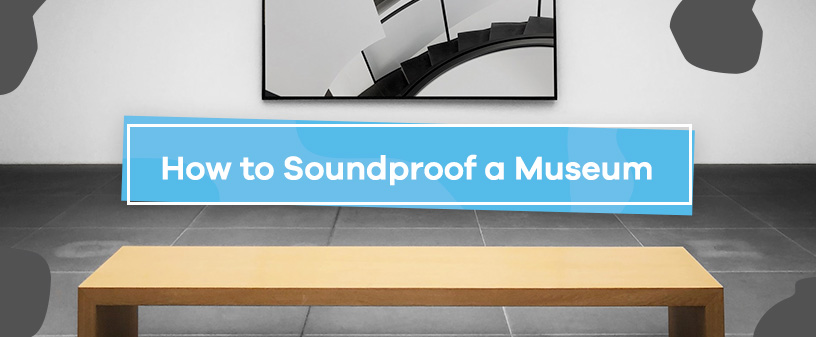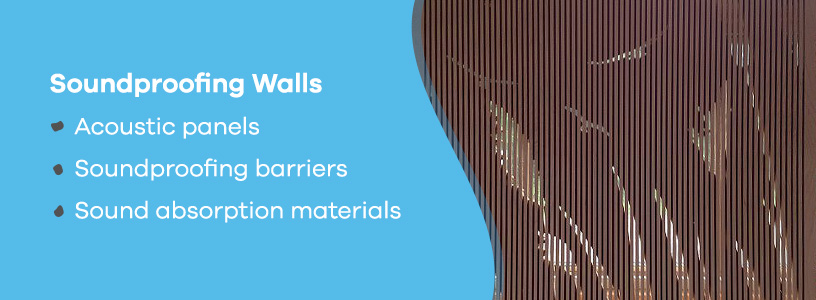

Museums are wonderful places for people to enjoy art, learn about history and appreciate the human experience on a deeper level. But it can be hard for someone to enjoy the displays if distracting noises are coming from every direction. Museums may be excellent places to spend an afternoon, but they can also be notorious for less-than-great acoustics.
The good news is that techniques and products exist for museum soundproofing. If you’re a museum owner looking to improve your museum sound, then you’ve come to the right place. With the right acoustic materials for museums, you can improve your space’s acoustics to give your visitors the best experience possible.
Benefits of Soundproofing Museums
As you may have already guessed, soundproofing your museum provides several benefits. Here are some of them:
- Better sound quality: When you take measures to improve the acoustics in your museum, your guests and employees will enjoy better sound quality. Your guests will hear tour guide descriptions with greater clarity and accuracy. Your employees will be able to hear and answer questions with ease. And sound effects or music that go along with some of your exhibits will sound their best thanks to the improved acoustics.
- Localized sound: The last thing your guests want is to hear noises from other areas of the museum ruining their concentration. One’s enjoyment of a museum exhibit is often a personal and internal experience. When you soundproof your museum, you’ll localize the sound in an area so each exhibit keeps its sounds to itself.
- Reduced echo and reverberation: Large rooms with hard surfaces are prevalent in many museums, new and old. These characteristics are major contributors to echo and reverb. Even smaller rooms with flat, reflective surfaces and glass display cases can contribute to echoes and reverberating noises. When you soundproof your museum, you’ll reduce how much these sounds can build and even stop them from occurring at all.
- A better reputation: After soundproofing your museum, you’ll start to see the benefits influence your operations more and more. Previous guests will have a greater desire to come back to your museum if their first impressions were positive. And as your reputation for providing an excellent, comfortable experience spreads, more first-time guests will pay you a visit. Running a great museum is a lot of work, but a big part of enhancing your operations is ensuring your museum has good soundproofing and acoustics.
Areas of a Museum to Soundproof
To experience the benefits above, you’ll have to make the right soundproofing choices. You need to put the right products and materials in the correct places to experience the best sound-dampening results possible.
Here are four areas you should soundproof in your museum and the acoustic materials you need to make it happen:
Walls
The walls are a crucial area to soundproof. Noises from outside your museum or from other rooms within your space can pass through walls, leading to disruptions throughout your exhibits. The goal is to stop these sounds from passing through in both directions. Here are some products to help you accomplish this:
- Acoustic panels: Hang acoustic panels on your museum walls to absorb sounds and stop sound waves from bouncing off reflective surfaces. There are several types of museum acoustic panels to choose from, including art acoustic panels, which give you all the soundproofing benefits with an emphasis on fitting your museum’s design scheme.
- Soundproofing barriers: Use soundproofing barriers to increase the sound-absorbing thickness of your museum’s walls. You can also hang soundproofing barriers in the middle of the room to create temporary barriers, letting you customize your solution based on your soundproofing needs.
- Sound absorption materials: A crucial part of enhancing your museum’s acoustics is to use sound absorption materials on the walls. These will help tame unwanted frequencies. Acoustic foam is especially useful for museum exhibits that demand high-quality sound, while acoustic partitions are portable options that can change when your displays do.

Ceiling
Many museums have high ceilings that contribute to echo and reverb. Others have several stories that can lead to sound traveling between floors, including impact and airborne noises. Here are products you can use on ceilings to aid in your museum soundproofing endeavors:
- Soundproof ceiling tiles: Stop soundwaves and vibrations from traveling through your museum’s ceiling with Quiet Board™ Water Resistant Panels. Use them as ceiling tiles to enjoy less unwanted noise entering your exhibits from above or below.
- Soundproofing systems: One of the best times to soundproof any building is during the construction phase. The isoTRAX® Soundproofing System lets you put soundproofing power into your museum ceiling to stop unwanted sounds in their tracks. Put it in your ceiling in the new construction or remodeling phase for acoustic benefits.
Floors
Floors can contribute to the buildup of noise in your museum. Many museums use hard material floorings that look pretty to the eye but can be less than ideal for the ear. But even carpeted flooring can benefit from soundproofing to reduce vibrations that can travel into the rooms below. Here are two types of flooring underlayment you can use to achieve your desired results:
- Impact Barrier QT Soundproof Underlayment: Soundproof Cow’s Impact Barrier QT consists of 92% recycled tire rubber, making it an environmentally friendly option to absorb sounds and vibrations. It works under almost every flooring material, including carpet, laminate, hardwood, tile and stone.
- PROFLEX™ 90: PROFLEX™ 90 is a laminated rubberized membrane. It provides high-quality soundproofing effects for hardwood, stone and tile while adding only 90 mils — or 0.09 inches — to your floor’s thickness.
Doors
Soundproof your museum’s doors to keep unwanted noises out of individual rooms. Here are some products to help with this:
- Acoustical sound sealant: Sounds can travel through small cracks and gaps around a doorframe. Use an acoustic sound sealant to seal these cracks.
- Quiet Door™ Automatic Door Sweep: Gaps under doors are common. They can contribute to a lot of unwanted sounds throughout your museum. You can cover the gaps under your museum doors with Quiet Door™ Automatic Door Sweeps from Soundproof Cow.
- Quiet Door™ Acoustic Door Panel: Thin and hollow doors let sounds pass through with ease. Thicker doors have much better acoustical properties. Make even a hollow door more soundproof with a Quiet Door ™ Acoustic Door Panel.
Soundproof Cow Can Help Improve Your Museum Acoustics
Museums may seem tricky to soundproof, but Soundproof Cow is here to make it easy. Our products can help you achieve better acoustics for your exhibits while limiting unwanted sounds from traveling too far. When you need to tame unruly sounds in your museum, Soundproof Cow products are the way to go.
Participate in an acoustic analysis today to learn more about how you can soundproof the spaces within your museum. Contact us online for more information about how we can help!
Soundproof Other Spaces

I just wanted to send a quick thank you for your rapid response and helpfulness. I very much appreciated it. You have been responsive in every way all through the process. It has been a pleasure doing business with you and your company.
- T. Alexander

